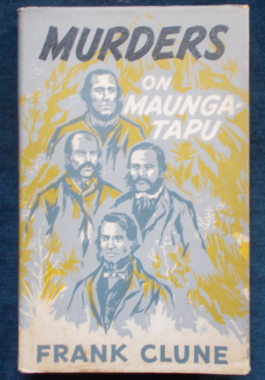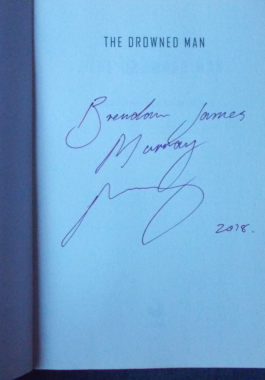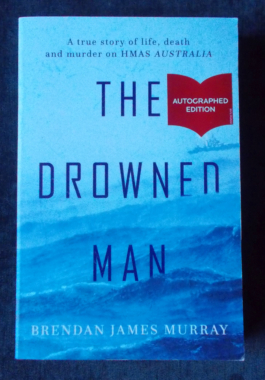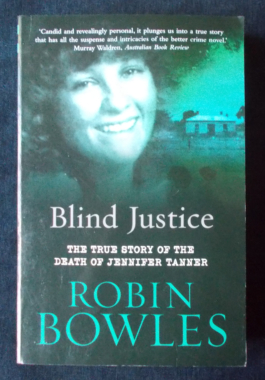- Sorry, this product is unavailable.
-
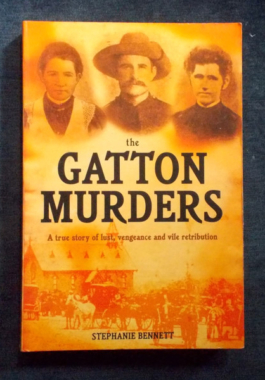 Boxing Day, 1898. Three members of the Murphy family - Michael, Ellen and Norah — are returning to the family farm after a trip in to Gatton, a small town west of Brisbane. On a deserted, moonlit road a few miles out of town they are ambushed. Their horse is killed and the three young people are taken to a remote paddock where the women are brutally raped and bludgeoned to death - and Michael is shot. By the time the police arrived the following day, locals had swarmed all over the crime scene, obliterating the evidence. What followed was a hopelessly bungled investigation and the crime remained unsolved. Fear and mistrust rocked the farming community. Theories about the perpetrator abounded. Was this the work of a sex-crazed tramp? Could a member of the Murphy family have been involved - or was revenge the motive? Stephanie Bennett's detailed examination of this baffling crime after many years spent scouring the available archival material, interviewing relatives of suspects and victims and visiting far flung areas of Queensland brings a new and disturbing theory to the surface that is both chilling and challenging. Queensland's most infamous unsolved murder.
Boxing Day, 1898. Three members of the Murphy family - Michael, Ellen and Norah — are returning to the family farm after a trip in to Gatton, a small town west of Brisbane. On a deserted, moonlit road a few miles out of town they are ambushed. Their horse is killed and the three young people are taken to a remote paddock where the women are brutally raped and bludgeoned to death - and Michael is shot. By the time the police arrived the following day, locals had swarmed all over the crime scene, obliterating the evidence. What followed was a hopelessly bungled investigation and the crime remained unsolved. Fear and mistrust rocked the farming community. Theories about the perpetrator abounded. Was this the work of a sex-crazed tramp? Could a member of the Murphy family have been involved - or was revenge the motive? Stephanie Bennett's detailed examination of this baffling crime after many years spent scouring the available archival material, interviewing relatives of suspects and victims and visiting far flung areas of Queensland brings a new and disturbing theory to the surface that is both chilling and challenging. Queensland's most infamous unsolved murder. -
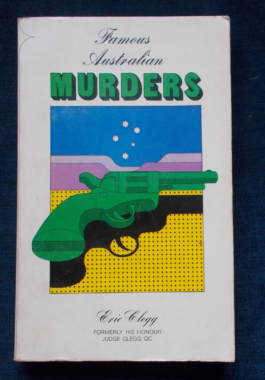 Eric Clegg, formerly His Honour Eric Clegg Q.C. is more than qualified to examine these famous trials and his expert viewpoint reveals many important and often controversial points which arose during the hearings. Cases contained in this volume include: The Kalgoorlie murders of two policemen in 1926, found down a disused mine-shaft; the Passionate Parson, acquitted on a charge of murdering his wife; the Lavers mstyery and the Sundown murders; the Pyjama Girl murder; the fantastic case of T. J. Ley, former Minister for Justice in New South Wales who was eventually convicted for the chalkpit murders and more. Illustrated with black and white photographs.
Eric Clegg, formerly His Honour Eric Clegg Q.C. is more than qualified to examine these famous trials and his expert viewpoint reveals many important and often controversial points which arose during the hearings. Cases contained in this volume include: The Kalgoorlie murders of two policemen in 1926, found down a disused mine-shaft; the Passionate Parson, acquitted on a charge of murdering his wife; the Lavers mstyery and the Sundown murders; the Pyjama Girl murder; the fantastic case of T. J. Ley, former Minister for Justice in New South Wales who was eventually convicted for the chalkpit murders and more. Illustrated with black and white photographs. -
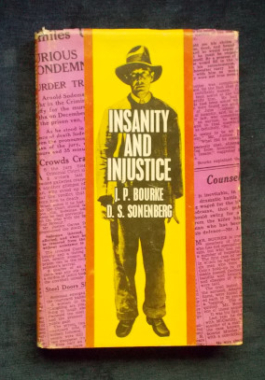 The case of Arnold Karl Soderman is one of the most remarkable in the criminal annals of 20th century Australia. No matter what angle - legal, medical or from the layman's point of view - it presents startling drama and raises challenging questions. The macabre story of the killing of four young children, one only six years old; the tragedy of two men charged with the crimes of which they were guiltless; the situation of a father confronted with an unfounded allegation of the ferocious murder of his daughter; the spectacle of honest witnesses mistakenly testifying as to the identity of an accused man so as to bring the object of their accusations within the shadow of the gallows; the fight for the life of the killer through the hierarchy of the Australian Court System up to the Privy Council; the decision to hang the accused, declared by two government doctor and another highly qualified psychiatrist to have been insane at the time of the killings; and the carrying out of the sentence all combine to make a story which calls for the telling. Co-author J.P. Bourke was Counsel for the Defence in this case 1935-1936
The case of Arnold Karl Soderman is one of the most remarkable in the criminal annals of 20th century Australia. No matter what angle - legal, medical or from the layman's point of view - it presents startling drama and raises challenging questions. The macabre story of the killing of four young children, one only six years old; the tragedy of two men charged with the crimes of which they were guiltless; the situation of a father confronted with an unfounded allegation of the ferocious murder of his daughter; the spectacle of honest witnesses mistakenly testifying as to the identity of an accused man so as to bring the object of their accusations within the shadow of the gallows; the fight for the life of the killer through the hierarchy of the Australian Court System up to the Privy Council; the decision to hang the accused, declared by two government doctor and another highly qualified psychiatrist to have been insane at the time of the killings; and the carrying out of the sentence all combine to make a story which calls for the telling. Co-author J.P. Bourke was Counsel for the Defence in this case 1935-1936 -

Twisted: John Glatt
$85.00When high school sweethearts Karen and Richard Sharpe married, they shared an interest in medicine, a desire for a family and dreams for the future. For Karen, the dream turned into a nightmare. After years of abuse at the hands of her physician husband, she tried to end their 27-year marriage. Fearing a crushing divorce settlement, Richard ended the marriage first by unloading a .22 rifle into Karen's chest. The murder revealed more than Boston society was ready for: Richard Sharpe's compulsive cross-dressing, with a preference for his own daughter's underwear; his taking of hormones to grow breasts, even stealing his wife's birth control pills to help the process. But there was more - much more...Illustrated with black and white photographs.
-
 In 1982, teenager Andrew Tregurtha pleaded guilty to the murder of the Greek Consul-General and a teacher in Sydney's inner city. Six years later he committed suicide at Berrima Gaol. Between the hours of dark and daylight, the lonely hours when prisoners are locked in their cells, Andrew hanged himself. This is his own story. Tregurtha's confession confession begins with the difficulty his family experienced dealing with his undiagnosed hyperactivity and dyslexia, the ensuing confrontations with education authorities and his move to King's Cross as a fifteen year old. Here, unbeknown to his parents, he worked as a male prostitute, eventually falling under the influence of Michael Caldwell, who introduced him to the world of crime in the city. He was sixteen when he was arrested for murder. It is a harrowing tale of life on the edge, of a waif at the Cross, written simply and unglamorously, as he worked towards self-understanding and rehabilitation. Andrew too his own life before publication. Illustrated with black and white photographs.
In 1982, teenager Andrew Tregurtha pleaded guilty to the murder of the Greek Consul-General and a teacher in Sydney's inner city. Six years later he committed suicide at Berrima Gaol. Between the hours of dark and daylight, the lonely hours when prisoners are locked in their cells, Andrew hanged himself. This is his own story. Tregurtha's confession confession begins with the difficulty his family experienced dealing with his undiagnosed hyperactivity and dyslexia, the ensuing confrontations with education authorities and his move to King's Cross as a fifteen year old. Here, unbeknown to his parents, he worked as a male prostitute, eventually falling under the influence of Michael Caldwell, who introduced him to the world of crime in the city. He was sixteen when he was arrested for murder. It is a harrowing tale of life on the edge, of a waif at the Cross, written simply and unglamorously, as he worked towards self-understanding and rehabilitation. Andrew too his own life before publication. Illustrated with black and white photographs. -
 On April 4th, 1968, Dr. Martin Luther King, Jr. stepped out onto the balcony of the Lorraine Motel in Memphis, Tennessee, and into his killer's line of fire. One shot ended Dr. King's life and forever changed the course of American history - setting into motion a massive cover-up that has withstood a quarter-century of scrutiny. Now, after 18 years of intensive investigation, William F. Pepper tears away the veil of subterfuge that has hidden the truth of King's death - proving the innocence of convicted assassin James Earl Rayand revealing the cabal of government leaders and organised crime figures that masterminded the assassination of one of the most influential leaders of our age. The author was an associate of Dr. King and executive director of the independent political coalition that hoped to put King forward as a third party presidential candidate in 1968. After the murder, Pepper walked away from politics. But in 1977. Reverend Ralph Abernathy asked Pepper to interview James Earl Ray. Initially sceptical, Pepper became convinced that Ray was innocent of the crime and that Ray had always claimed, he had been manipulated by a man named Raul and was the victim of a set-up. But who was behind the set-up - and why?
On April 4th, 1968, Dr. Martin Luther King, Jr. stepped out onto the balcony of the Lorraine Motel in Memphis, Tennessee, and into his killer's line of fire. One shot ended Dr. King's life and forever changed the course of American history - setting into motion a massive cover-up that has withstood a quarter-century of scrutiny. Now, after 18 years of intensive investigation, William F. Pepper tears away the veil of subterfuge that has hidden the truth of King's death - proving the innocence of convicted assassin James Earl Rayand revealing the cabal of government leaders and organised crime figures that masterminded the assassination of one of the most influential leaders of our age. The author was an associate of Dr. King and executive director of the independent political coalition that hoped to put King forward as a third party presidential candidate in 1968. After the murder, Pepper walked away from politics. But in 1977. Reverend Ralph Abernathy asked Pepper to interview James Earl Ray. Initially sceptical, Pepper became convinced that Ray was innocent of the crime and that Ray had always claimed, he had been manipulated by a man named Raul and was the victim of a set-up. But who was behind the set-up - and why? -
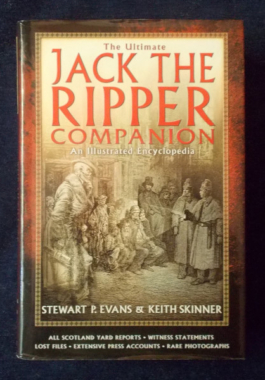 This really is the ultimate for Ripperologists - an encyclopedic work, solidly researched and profusely illustrated, collated from all the known and still-existing official records and supplemented by contemporary press reports. It presents. for the first time in one volume, a prime-source reference book on the eleven shocking prostitute murders that took place in the East End of London between 1888 and 1891. While there is no doubt that the Whitechapel Murders, as they were classified by Scotland Yard, were committed by more than one person, no one knows how many of the killings can be attributed to a single culprit. More than one murderer wore the guise of Jack the Ripper, and the identities of all suspects to this day remain unknown. Divorcing the facts of the Ripper case from the myths that have proliferated in fiction and film, this is a factual, documented narrative of the entire series of crimes, their forensic evidence, the official suspects and possible accomplices, police reports, inquests, newspaper articles of the day and rare photographs.
This really is the ultimate for Ripperologists - an encyclopedic work, solidly researched and profusely illustrated, collated from all the known and still-existing official records and supplemented by contemporary press reports. It presents. for the first time in one volume, a prime-source reference book on the eleven shocking prostitute murders that took place in the East End of London between 1888 and 1891. While there is no doubt that the Whitechapel Murders, as they were classified by Scotland Yard, were committed by more than one person, no one knows how many of the killings can be attributed to a single culprit. More than one murderer wore the guise of Jack the Ripper, and the identities of all suspects to this day remain unknown. Divorcing the facts of the Ripper case from the myths that have proliferated in fiction and film, this is a factual, documented narrative of the entire series of crimes, their forensic evidence, the official suspects and possible accomplices, police reports, inquests, newspaper articles of the day and rare photographs. -
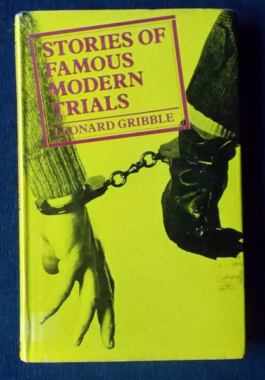 With such intriguing chapters as: The Riddle of the Bordereau (the Dreyfus case); Murder in High Society (the murder of Stanford White and the affair of Evelyn Stanford nee Nesbit and Harry Thaw) ; the Tragedy of Oscar Slater (the murder of Marion Gilchrist); The Original Winslow Boy (the tragedy caused by the theft of a five shilling postal order); A Matter of High Treason (Roger Casement); The Green Bicycle Mystery (the murder of Bella Wright) ; Buccaneer in Morning Coat (Horatio Bottomley, swindler par excellence) ; The Incredible Fire Raisers (the Leopold Harris arson gang) ; Justice Comes To Nuremburg; The Double Betrayal (the case of Klaus Fuchs); Teenagers On A Roof (the thrill-killing of a police man in London, 1952) ; The Great Train Robbers.
With such intriguing chapters as: The Riddle of the Bordereau (the Dreyfus case); Murder in High Society (the murder of Stanford White and the affair of Evelyn Stanford nee Nesbit and Harry Thaw) ; the Tragedy of Oscar Slater (the murder of Marion Gilchrist); The Original Winslow Boy (the tragedy caused by the theft of a five shilling postal order); A Matter of High Treason (Roger Casement); The Green Bicycle Mystery (the murder of Bella Wright) ; Buccaneer in Morning Coat (Horatio Bottomley, swindler par excellence) ; The Incredible Fire Raisers (the Leopold Harris arson gang) ; Justice Comes To Nuremburg; The Double Betrayal (the case of Klaus Fuchs); Teenagers On A Roof (the thrill-killing of a police man in London, 1952) ; The Great Train Robbers. -
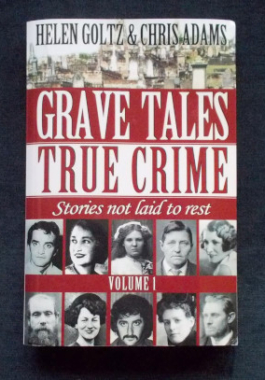 What made them do it? What were they thinking? Was it nature or nurture, that is, were they born evil or were they the products of their environment? And why are we so fascinated with crime? Journalists Helen Goltz and Chris Adams have been spoilt for choice selecting stories for the first Grave Tales: True Crime volume. These are some of the terrible crimes that took away the public innocence, crimes destined never to be solved that live on in Australian history… crimes that are confounding with their cruelty, staggering in their brilliance and amazing in their sheer audacity. In this volume: Edward Leonski; Norman 'Chops' Lee; Linda Agostini, the 'pyjama girl'; The Battle Of Broken Hill; Martha Needle; John T.W. Smith; Bertha and Mary Schippan; Creswell and Orton; Frderick Bailey Deeming; Betty Shanks; Robert Francis Burns; The Clarke Brothers; Chrissie Venn; Eugenia Falleni; The Somerton Man. Illustrated with maps, photographs and includes all references and grave locations.
What made them do it? What were they thinking? Was it nature or nurture, that is, were they born evil or were they the products of their environment? And why are we so fascinated with crime? Journalists Helen Goltz and Chris Adams have been spoilt for choice selecting stories for the first Grave Tales: True Crime volume. These are some of the terrible crimes that took away the public innocence, crimes destined never to be solved that live on in Australian history… crimes that are confounding with their cruelty, staggering in their brilliance and amazing in their sheer audacity. In this volume: Edward Leonski; Norman 'Chops' Lee; Linda Agostini, the 'pyjama girl'; The Battle Of Broken Hill; Martha Needle; John T.W. Smith; Bertha and Mary Schippan; Creswell and Orton; Frderick Bailey Deeming; Betty Shanks; Robert Francis Burns; The Clarke Brothers; Chrissie Venn; Eugenia Falleni; The Somerton Man. Illustrated with maps, photographs and includes all references and grave locations. -
 The author took a job in an Australian prison because - well, he needed a job, and any job would do. What had been a stop gap became and all-absorbing preoccupation with the problem of men in prison. One day, he was asked if he remembered the Greek bloke who had killed his wife with half a house brick. He couldn't remember the particular Greek - and he realised that over the seven years of his employment there, that the stone and steel had crept into his heart to the extent that a man who had killed his wife with half a house brick had left no impression on him. In search of what beliefs and values he had left to him after prolonged exposure to the brutality, cynicism and despair of a big maximum-security prison, the author examines his experiences, not as a psychologist, but as a man whose profession is psychology. In the process, comes to several important conclusions.
The author took a job in an Australian prison because - well, he needed a job, and any job would do. What had been a stop gap became and all-absorbing preoccupation with the problem of men in prison. One day, he was asked if he remembered the Greek bloke who had killed his wife with half a house brick. He couldn't remember the particular Greek - and he realised that over the seven years of his employment there, that the stone and steel had crept into his heart to the extent that a man who had killed his wife with half a house brick had left no impression on him. In search of what beliefs and values he had left to him after prolonged exposure to the brutality, cynicism and despair of a big maximum-security prison, the author examines his experiences, not as a psychologist, but as a man whose profession is psychology. In the process, comes to several important conclusions. -
 Australia has had its fair share of murders - the grisly, the macabre, the humdrum, the unsolved and the controversial. Men have been hanged who perhaps should never have been convicted; men have gone free who perhaps should have been found guilty. Just the chapter headings alone are enough to entice the reader: The Crimson Feather; Roadside Nightmare - the murder of a courting couple by William Moxley; The Pyjama Girl case, still unsolved to this day; The Walking Corpse ( dubbed the 'Mutilator Murders') and more.
Australia has had its fair share of murders - the grisly, the macabre, the humdrum, the unsolved and the controversial. Men have been hanged who perhaps should never have been convicted; men have gone free who perhaps should have been found guilty. Just the chapter headings alone are enough to entice the reader: The Crimson Feather; Roadside Nightmare - the murder of a courting couple by William Moxley; The Pyjama Girl case, still unsolved to this day; The Walking Corpse ( dubbed the 'Mutilator Murders') and more. -
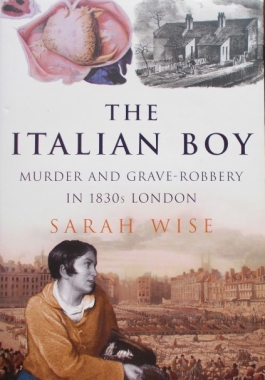
The Italian Boy: Sarah Wise
$30.00At the end of 1831, authorities unearthed a series of crimes at 3 Novia Scotia Gardens that appeared to be a copycat of the infamous Burke and Hare killings in Edinburgh only three years earlier. Soon three body-snatchers were on trial for providing the anatomy schools of London with suspiciously fresh bodies for dissection. They became famous as the London Burkers and their story was dubbed "The Italian Boy" case. The ensuing uproar forced legislation to end body-snatching in Britain. As well as covering the actual case, this book is a fascinating window on the lives of the poor of 1830s London. -

Jimmy Governor: Frank Clune
$30.00Jimmy Governor was born a half-caste and grew up to be a gentle, hard-working man. On December 10 1898, he committed the unpardonable sin of marrying a white woman. He and his wife, downgraded to the status of outcasts, became the targets of taunts, insults and bigotry from a society determined to undermine their dignity. Two years later, Jimmy Governor became a murderer. -
 The name of Gary Heidnik will live on in infamy, and his home at 3520 North Marshall Street in Philadelphia, is a house tainted with the memory of unbelievable horrors. What police found there was an incredible nightmare made real. Four young women had been held captive - some for months - half-naked and chained. They had been tortured, starved, and repeatedly raped. But more grotesque discoveries lay in the kitchen: human limbs frozen, a torso burned to cinders, an empty pot suspiciously scorched...This is not a story for the faint-hearted; this is a shocking true account of the self-proclaimed minister with a long history of mental illness, who preyed upon the susceptible and the retarded in a bizarre plan to create his own "baby factory." It is a macabre web spun around money, power and religion, tangled with courtroom drama and lawyers' tactics, sure to send a chill into your very soul. Illustrated with black and white photographs.
The name of Gary Heidnik will live on in infamy, and his home at 3520 North Marshall Street in Philadelphia, is a house tainted with the memory of unbelievable horrors. What police found there was an incredible nightmare made real. Four young women had been held captive - some for months - half-naked and chained. They had been tortured, starved, and repeatedly raped. But more grotesque discoveries lay in the kitchen: human limbs frozen, a torso burned to cinders, an empty pot suspiciously scorched...This is not a story for the faint-hearted; this is a shocking true account of the self-proclaimed minister with a long history of mental illness, who preyed upon the susceptible and the retarded in a bizarre plan to create his own "baby factory." It is a macabre web spun around money, power and religion, tangled with courtroom drama and lawyers' tactics, sure to send a chill into your very soul. Illustrated with black and white photographs. -
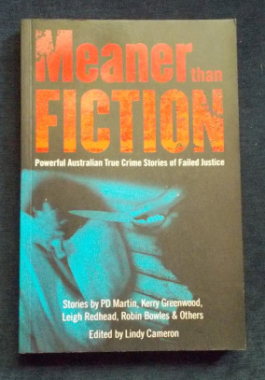 Just where is justice in Australia hiding? This brilliant new collection of true crime stories takes us into the Australian courts of the 1980s and '90s, back in time to the goldfields of the 1860s, and out to the island nation of Nauru in 2006 to explore how the scales of justice are unbalanced. This is a world in which the innocent still get locked up and the guilty too often go free. This collection is a must for all lovers of true crime. It will shock, outrage and intrigue. Features: Robin Bowles charts a mysterious case of sudden death; Lindy Cameron on the random shooting of Dr Andrew Taylor; Kathryn Deans on Heather Osland and how 13 years of torture was just the start of her ordeal; Liz Filleul on the disappearance of Elisabeth Membrey; Kerry Greenwood examines the role that crime writers have played in redressing miscarriages of justice; PD Martin on the Innocence Project, and Andrew Mallard; Susan Metcalfe on the tragedy of two Iraqis left behind on Nauru; Leigh Redhead asks how a man who secretly filmed his flatmates got away with it; Shelley Robertson, a modern forensic pathologist, questions the 'whole truth' of expert testimony; and Lucy Sussex on the unfortunate author Mary Fortune.
Just where is justice in Australia hiding? This brilliant new collection of true crime stories takes us into the Australian courts of the 1980s and '90s, back in time to the goldfields of the 1860s, and out to the island nation of Nauru in 2006 to explore how the scales of justice are unbalanced. This is a world in which the innocent still get locked up and the guilty too often go free. This collection is a must for all lovers of true crime. It will shock, outrage and intrigue. Features: Robin Bowles charts a mysterious case of sudden death; Lindy Cameron on the random shooting of Dr Andrew Taylor; Kathryn Deans on Heather Osland and how 13 years of torture was just the start of her ordeal; Liz Filleul on the disappearance of Elisabeth Membrey; Kerry Greenwood examines the role that crime writers have played in redressing miscarriages of justice; PD Martin on the Innocence Project, and Andrew Mallard; Susan Metcalfe on the tragedy of two Iraqis left behind on Nauru; Leigh Redhead asks how a man who secretly filmed his flatmates got away with it; Shelley Robertson, a modern forensic pathologist, questions the 'whole truth' of expert testimony; and Lucy Sussex on the unfortunate author Mary Fortune.



